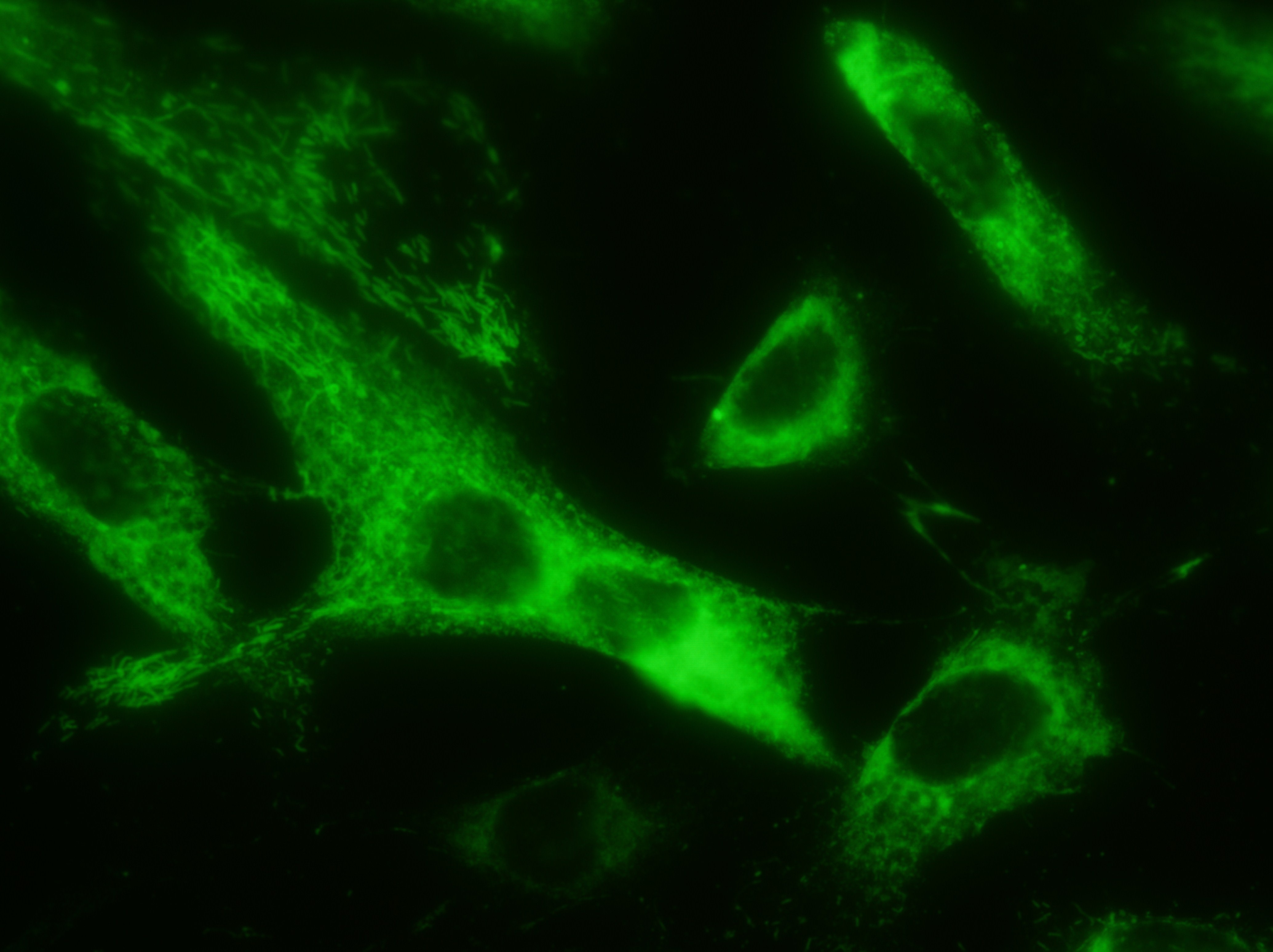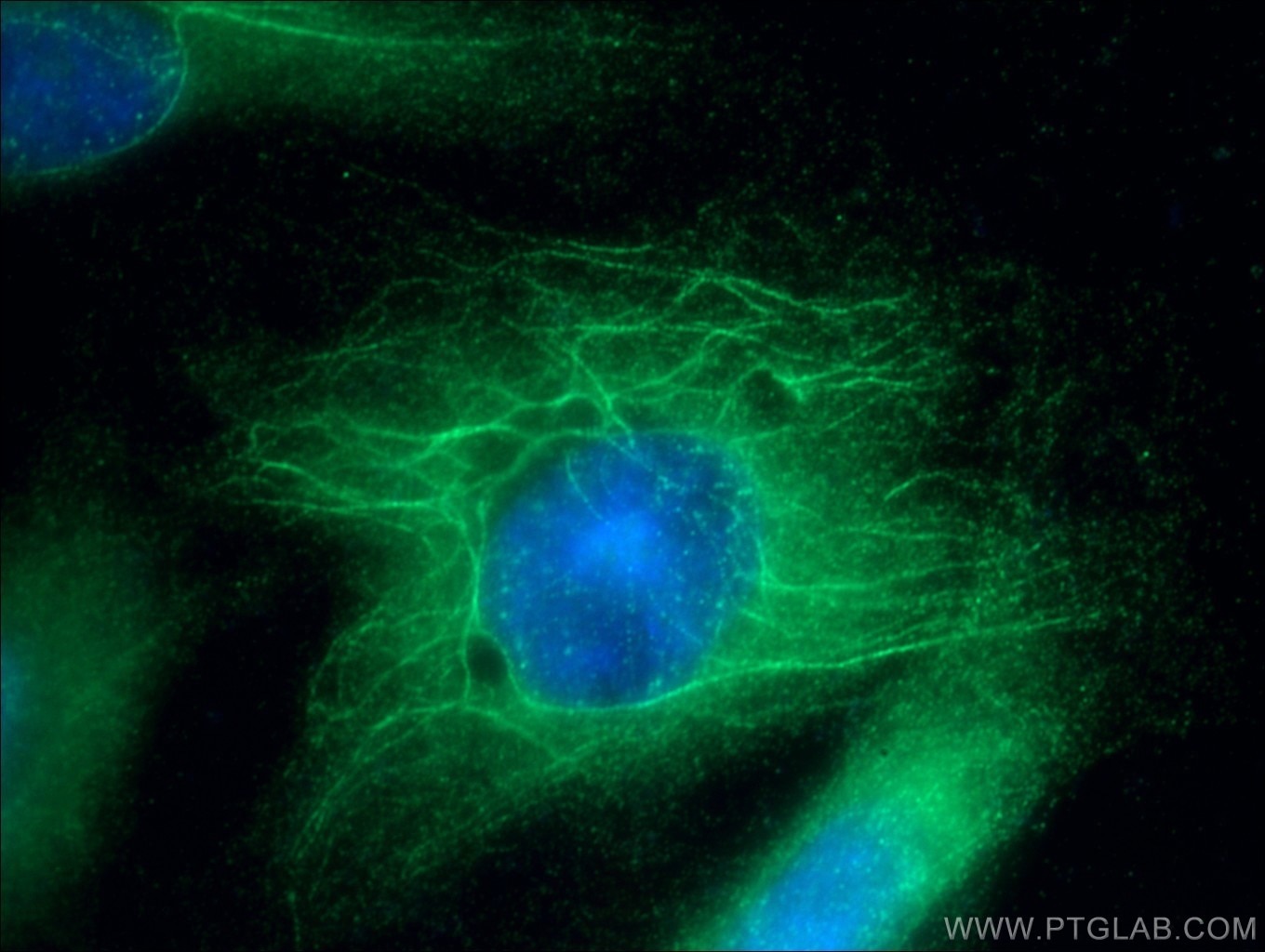Tested Applications
| Positive IF/ICC detected in | human umbilical vein endothelial cells, HUVEC cells |
Recommended dilution
| Application | Dilution |
|---|---|
| Immunofluorescence (IF)/ICC | IF/ICC : N/A |
| It is recommended that this reagent should be titrated in each testing system to obtain optimal results. | |
| Sample-dependent, Check data in validation data gallery. | |
Published Applications
| IF | See 1 publications below |
Product Information
21485-1-AP targets F8 in IF, ELISA applications and shows reactivity with human samples.
| Tested Reactivity | human |
| Cited Reactivity | human |
| Host / Isotype | Rabbit / IgG |
| Class | Polyclonal |
| Type | Antibody |
| Immunogen |
CatNo: Ag15772 Product name: Recombinant human F8 protein Source: e coli.-derived, PET28a Tag: 6*His Domain: 2144-2351 aa of BC022513 Sequence: VFFGNVDSSGIKHNIFNPPIIARYIRLHPTHYSIRSTLRMELMGCDLNSCSMPLGMESKAISDAQITASSYFTNMFATWSPSKARLHLQGRSNAWRPQVNNPKEWLQVDFQKTMKVTGVTTQGVKSLLTSMYVKEFLISSSQDGHQWTLFFQNGKVKVFQGNQDSFTPVVNSLDPPLLTRYLRIHPQSWVHQIALRMEVLGCEAQDLY Predict reactive species |
| Full Name | coagulation factor VIII, procoagulant component |
| Calculated Molecular Weight | 2351 aa, 267 kDa |
| GenBank Accession Number | BC022513 |
| Gene Symbol | F8 |
| Gene ID (NCBI) | 2157 |
| RRID | AB_2878868 |
| Conjugate | Unconjugated |
| Form | Liquid |
| Purification Method | Antigen affinity purification |
| UNIPROT ID | P00451 |
| Storage Buffer | PBS with 0.02% sodium azide and 50% glycerol, pH 7.3. |
| Storage Conditions | Store at -20°C. Stable for one year after shipment. Aliquoting is unnecessary for -20oC storage. 20ul sizes contain 0.1% BSA. |
Background Information
F8, also named as AHF and F8C, belongs to the multicopper oxidase family. F8, along with calcium and phospholipid, acts as a cofactor for factor IXa when it converts factor X to the activated form, factor Xa. F8 can be cleaved to 4 chains: F8a heavy chain, 200 kDa isoform, F8a heavy chain, 92 kDa isoform, F8 B chain and F8a light chain. This antibody can recognize the light chain.
Protocols
| Product Specific Protocols | |
|---|---|
| IF protocol for F8 antibody 21485-1-AP | Download protocol |
| Standard Protocols | |
|---|---|
| Click here to view our Standard Protocols |






